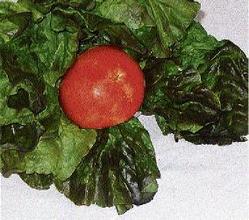
Rosalee Brown - DIETITIAN'S DESK
There is no doubt about the danger of high blood pressure and its relationship to sudden deaths, strokes, other cardiovascular accidents and organ damage such as kidney failure.
Persons with high blood pressure are warned against diets high in sodium because of sodium's potential to elevate blood pressure and to make the management of the condition difficult. Popular sources of sodium in the diet are processed foods.
Sodium chloride is used as a form of preservative in many processed foods and, in others, as flavour enhancers. This high intake of, and seeming need for, sodium has become an addiction for many persons.
The role of other minerals
There are other minerals which are important in the control of blood pressure. Potassium and sodium are the two main electrolytes in the body.
Potassium is found predominately in the fluids inside of body cells, compared to sodium which is found predominately in fluids outside of the cells. The positions of these electrolytes are important to the functioning of activities in the body, such as impulses and also important to the functioning of the cells.
A specific ratio of these electrolytes promotes health and well-being. The approximate ratio is three times potassium to sodium (3:1). A diet high in sodium and low in potassium-rich foods does not support this ratio. Although the body has the ability to constantly regulate itself to create this balance, a poor diet with high intakes of sodium at the expense of potassium can result in problems relating to blood pressure control.
Magnesium is another important mineral in high blood pressure prevention and management. Magnesium has a role to play in the balance of potassium inside and outside of the cells. This small but very important role is among its many roles in health promotion in the human body.
Chloride is also important and is abundant outside of the cells and works with sodium with its negative charge neutralising the positive charge of sodium. Less than one per cent of the body's calcium has a role to play in muscle contraction and other functions which are important in blood pressure control.
Increasing potassium to sodium ratio
Plant foods are naturally very high in potassium. They have a high potassium-to-sodium ratio. If we consume more vegetables either raw or lightly cooked with fresh herbs and fresh fruits, we will consume loads of potassium. Potassium can be leached out in the cooking water so vegetables should be cooked in small amounts of water and if possible use the water in other areas of meal preparation.
Legumes, whole grains and leafy greens are good sources of magnesium. Leafy greens are examples of plant sources of calcium. Persons with high blood pressure can benefit from increasing fruits and vegetables, peas and beans and seasoning their foods only with natural herbs and seasonings. Remember you want to achieve approximately a 3:1 ratio of potassium to sodium.
Persons with high blood pressure and other complications such as kidney disease or circulation problems and who are on blood-thinning medication, must be guided by a medical or nutrition professional about the intake of large quantities of fruits and vegetables.
In addition to a diet rich in potassium and magnesium, it is important to reduce cholesterol, saturated and total fats, alcohol and caffeine intake, while increasing daily exercise.

Ways to increase vegetable intake:
Drink juices Have as salads Eat starchy vegetables replacing staple portions Include in meat dishes Eat vegetables steamed with herbs such as rosemary, garlic and ginger enhances flavour.
Rosalee M. Brown is a registered dietitian/nutritionist who operates Integrated Nutrition and Health Services; email: yourhealth@gleanerjm.com.

